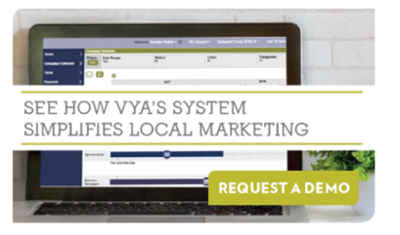 That “uh-oh” moment…When you are looking to buy something – cell phone, smart TV, any piece of technology, really – what’s one of the first questions you ask the sales person? You want to know what the product can do; what it’s capable of. It’s often not until after we make the purchase that we step back and realize we have no clue how to make the product do what we bought it to do. It happens all the time in business, too; especially when it comes to marketing technology. The issue is usability and, according to a recent report by Gleanster on marketing resource management systems, “ease of use” is one of the most important criteria we should consider in the evaluation and buying process.
That “uh-oh” moment…When you are looking to buy something – cell phone, smart TV, any piece of technology, really – what’s one of the first questions you ask the sales person? You want to know what the product can do; what it’s capable of. It’s often not until after we make the purchase that we step back and realize we have no clue how to make the product do what we bought it to do. It happens all the time in business, too; especially when it comes to marketing technology. The issue is usability and, according to a recent report by Gleanster on marketing resource management systems, “ease of use” is one of the most important criteria we should consider in the evaluation and buying process.
Ease of use frequently takes a backseat to features and benefits because it usually can’t be explained in easy-to-skim bullet points, but it’s an issue you should always delve deeper into before making a decision. According to Rand Group, long lists of features can be impressive, but “getting the software to perform all those functions may be complex and cost-prohibitive.”
Translation: you increase financial risk.
That risk comes in two forms. First, complex systems require expertise to run and manage. And building that expertise may require you to spend a lot of time and money to train one or two staff members. That, then, begs the question: What happens when those staff move on? Second, many features outside the core functions are eventually disregarded when using a more complex system (people just give up on trying to figure them out), meaning you’re not using everything that you paid for.
The bottom line is this: features and functionality are only as good as usability. They don’t matter if users can’t or won’t use them. This has a direct impact on adoption as well, and if few people use the solution, why are you paying for it? That means the more users you hope to have, the more important usability becomes. And that importance only increases with cross-departmental users and external users.
In the case of marketing resource management systems deployed across field sales channels, partners, agents, dealers, etc... the importance of usability goes up when you consider the potential lack of expertise at the local level – if you can’t yell over the cubicle for help, you’re less likely to seek it, and more likely to abandon the system or the feature you are attempting to use. As Gleanster states, “A system that occasional users can learn with a minimum of instruction is critical; so is a system that heavy users can operate quickly and easily once they are trained.”
In short, the system you implement, whether MRM, CRM or some other business function platform, should not add complexity to business processes; it should reduce it. By ensuring ease-of-use, you’re reducing your investment risk and delivering more bang for your buck.



